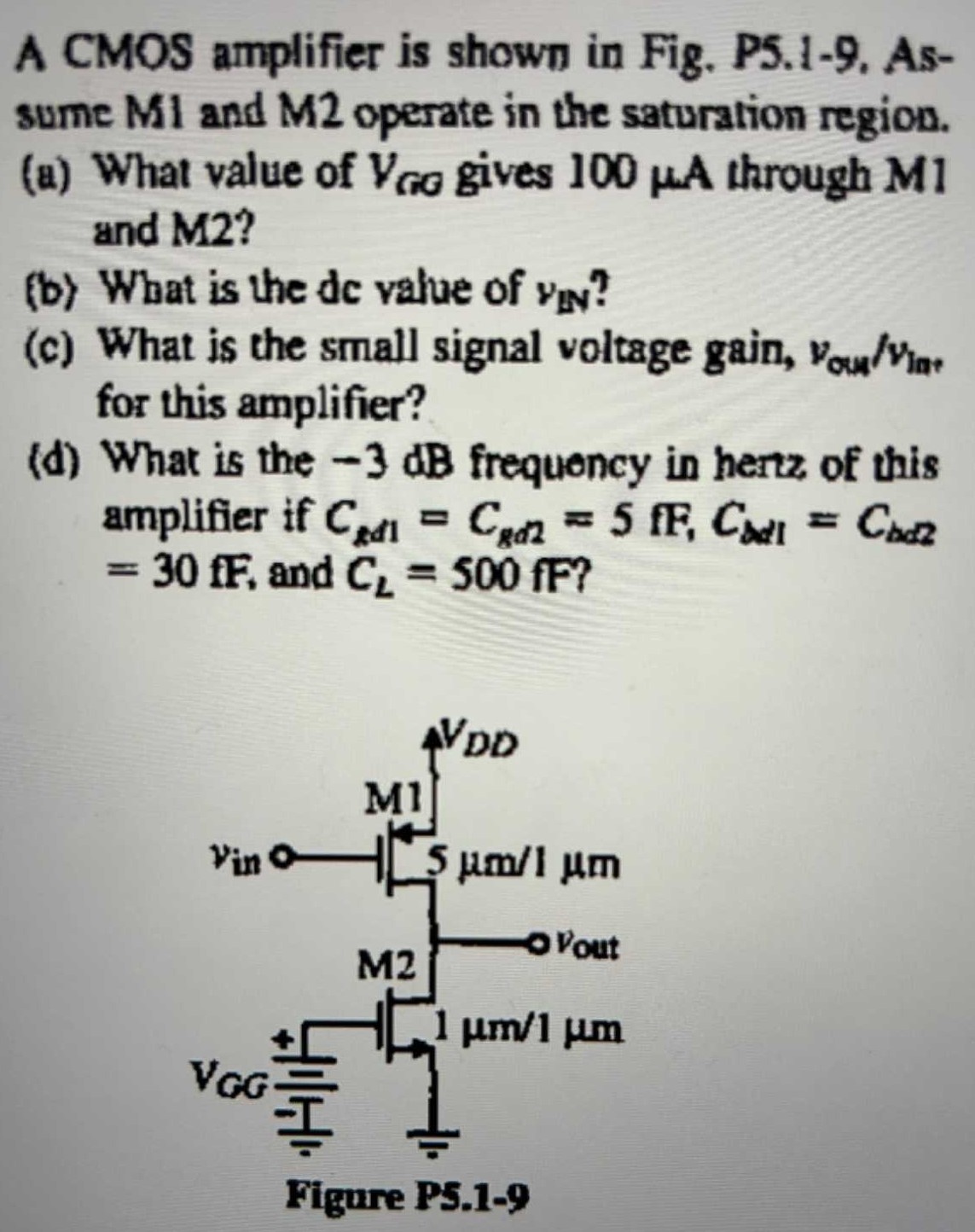A CMOS amplifier is shown in Fig. P5.1-9. Assume M1 and M2 operate in the saturation region. (a) What value of VGG gives 100 μA through M1 and M2? (b) What is the de value of vIN ? (c) What is the small signal voltage gain, vout/vln, for this amplifier? (d) What is the −3 dB frequency in hertz of this amplifier if Cgd1 = Cgd2 = 5fF, CbdI1 = Cbd2 = 30fF, and CL = 500fF?



You'll get a detailed, step-by-step and expert verified solution.
 Work With Experts to Reach at Correct Answers
Work With Experts to Reach at Correct Answers